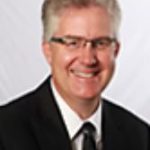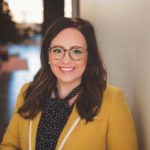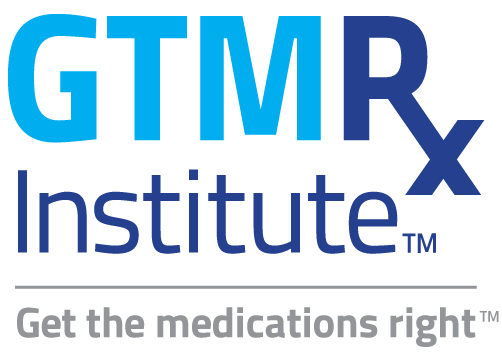
 Overcoming turnover, transitions and a troubled system: Making CMM work in long-term care
Overcoming turnover, transitions and a troubled system: Making CMM work in long-term care
By Mark Gerdes, RPh, director of Avera long-term care pharmacy for Avera McKennan Hospital and University Health Center; and Anna Meyer, PharmD, clinical pharmacy supervisor for the Avera Long-Term Care Pharmacy
October 12, 2022
Getting the medications right can be a challenge for any patient. When it comes to seniors, however, teams face even more hurdles. Older patients are more likely to be sicker, frailer and on multiple medications, requiring knowledge, expertise and patience. But the greatest challenges for this population may be operational, not clinical.
Navigating a broken system
Operational barriers, including the complexity of the health care system, create unnecessary hurdles to comprehensive care in general and medication optimization in particular.
The way we deliver medications to patients is largely run by insurance companies and pharmacy benefit managers—not pharmacists and physicians. Insurance companies and PBMs may be more focused on the bottom line than on outcomes, and this interferes with providing appropriate care.
Take the retail side, which serves about 95% of the senior population. Reimbursement is so low that pharmacists are often flying at a hundred miles an hour; they can’t take the time to focus on medication management. For example, here’s a question we pose to pharmacy interns: When was the last time you heard a retail pharmacist got a new Lasix prescription and asked the patient when their potassium lab is scheduled? It doesn’t happen.
A second operational barrier is the cost structure of Medicare Part D. It’s a complex four-tier payment system: deductible, initial coverage, the donut hole and then catastrophic coverage. Compounding this, insurers and PBMs are marketing plans that claim to have $0 copays based on initial coverage. Of course, they will eventually go back up once the initial coverage ends. Even worse, PBMs are directly calling on assisted living patients with such “deals.” They are actively working against the best interest of the patients.
Despite these challenges, we’re able to work with patients to optimize medication use and improve their health. It requires a coordinated, comprehensive approach.
Transitions matter most
We know that patients entering long-term care have complex medical issues. It’s important to identify those issues when the person is being admitted. It’s at points of transitions where important information can be missed or ignored. We see this even when everyone is in the same system or shares the same EHR.
Major gaps are common, but we have found that by putting clinical pharmacists in the facility, we are able to become an integral part of the care team. We have a clinical pharmacist involved in every Medicare A admission; they’re often able to identify the gaps and discrepancies as the patient is being admitted.
We read the entire discharge summary from the hospital. We’re not just focused on the medication list provided to us. We must dig deeper. What are their diagnoses? What is the purpose of each medication? What’s missing from the summary? Is there a list of all the medications they were taking at home?
Managing medications comprehensively
For patients in assisted living or skilled nursing facilities, improper management of medication often contributes to physical and mental decline.
Sometimes, the problem may be as simple as confusing short-acting and long-acting insulin. Counseling can make an enormous difference without changing a single medication.
Usually, however, it’s more complex. Polypharmacy is common: The patients we see are taking, on average, 14 medications. And some of those medications may be treating the side effect of another medication.
We want to be sure that each of these medications is truly necessary. That means finding the diagnoses and indication that matches. And if we can eliminate some of the medications, we’re obviously decreasing their chance of adverse effects.
We can do that part. But comprehensive medication management is a team-based activity. We need to enlist the nurses and aides to ensure patients are taking the right medications at the right time, and that they are continuing to thrive. In the current environment, that’s quite the challenge.
Targeting the highest risk
To best leverage our resources, we focus on six high-risk areas: diabetes, uncontrolled pain, undesired weight loss, heart failure, COPD and post-ortho surgery; those last three have especially high rates of readmission.
We can drop those readmission rates by focusing on these patients and all the medications they take, doing an assessment, providing medication reconciliation, providing education and developing a care plan. We try to ensure that we’ve done our part, the transition care team at the hospital did their part, and the transition care team at the nursing home did their part.
We then inform the nursing team about what they need to monitor. For instance, we’ll send a packet that says something along the lines of, “By the way, this person has had surgery. Here are the pain control issues you should worry about. Here are the antibiotic concerns you should have, etc.”
We do the same thing for COPD, for heart failure, and all the conditions we mentioned.
With early identification of medication-related problems, we can reduce the likelihood of hospitalization. But again, other team members must help execute the care plans.
Buy-in, staffing and education
Buy-in varies by facility. It starts with leadership focused on keeping the patients in place and as healthy as possible and the staff willing to make it happen. They don’t have to understand the medications; they just need to be observant. For instance, we talked to medical aides about COPD meds and what to watch for. If they’re noticing shortness of breath or decreased exercise tolerance, it’s time to bring in someone to check the meds.
When we get the staff nurses to collaborate with us, that’s when the program can blossom. Because if that staff nurse understands, they know what to look for. They will be the person who’s going to see that patient walking down the hall to breakfast Monday, Tuesday and Wednesday, and then on Thursday, they get halfway down to breakfast and ask for somebody to help them because they can’t catch their breath.
The staff person needs to be able to say, “We need to take action now. We don’t just need to put them in the wheelchair and get them to breakfast. We need to put them in the wheelchair, get them back to their room, give them a nebulizer and get on top of the COPD before we feed them.”
It’s an ongoing process. We have to continue educating that end user nurse and/or med aide as to the importance of their role in patient monitoring and preventing exacerbations and declines.
And we must keep repeating it — not because nurses and aides are unwilling, but because of turnover.
Dealing with facility turnover has become the hardest part of comprehensively managing patient medications. Sometimes, it’s even hard to keep track of who the charge nurse is. Providing comprehensive team-based care becomes more complicated when the teams keep changing.
In an environment of rapid turnover, how do we educate and train the facility staff to understand their role in optimizing medications? As new people come on, they have hundreds of things to learn, and pharmacy isn’t always at the top of their list.
We conduct about two education programs a month, and we might get an audience of 30 people. Well, that’s great, but we probably have 600 nurses out there. So that’s a 5% attendance rate. So the question is, how do they take what they learned back into their facility to make the most of it?
Caregiver as team member
Given all these challenges, every senior should have an advocate who is the watchdog of the overall care, who is the person who’s going to go to appointments and keep track of the medications, because the clinics and the pharmacies and the assisted living facilities are all so overwhelmed. In the current state of health care delivery, someone who really understands the senior’s needs, should be part of physician visits, facility admissions and other consults. This is especially important at transitions of care.
Why it matters
If the medications are right and accurate and appropriate for the individual, we’re going to have decreased health care costs. We avoid hospitalizations. We better control comorbidities. We’re able to keep people at home or in the place that they’re living and decrease the cost of health care.
But it’s more than that. We must get the medications right because each patient is somebody’s dad, somebody’s grandma, somebody’s wife, somebody’s husband. For our team, the people who work day in and day out trying to do complex things, the reward at the end is knowing we helped another person for the right reason.
We want the right combination of medications for that person, so they can function as best they can physically, emotionally and spiritually. We want that person to have the best quality of life. That’s why we do what we do.

